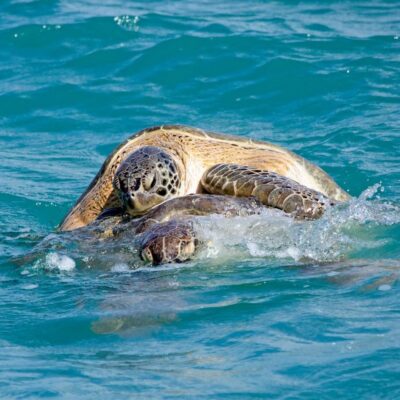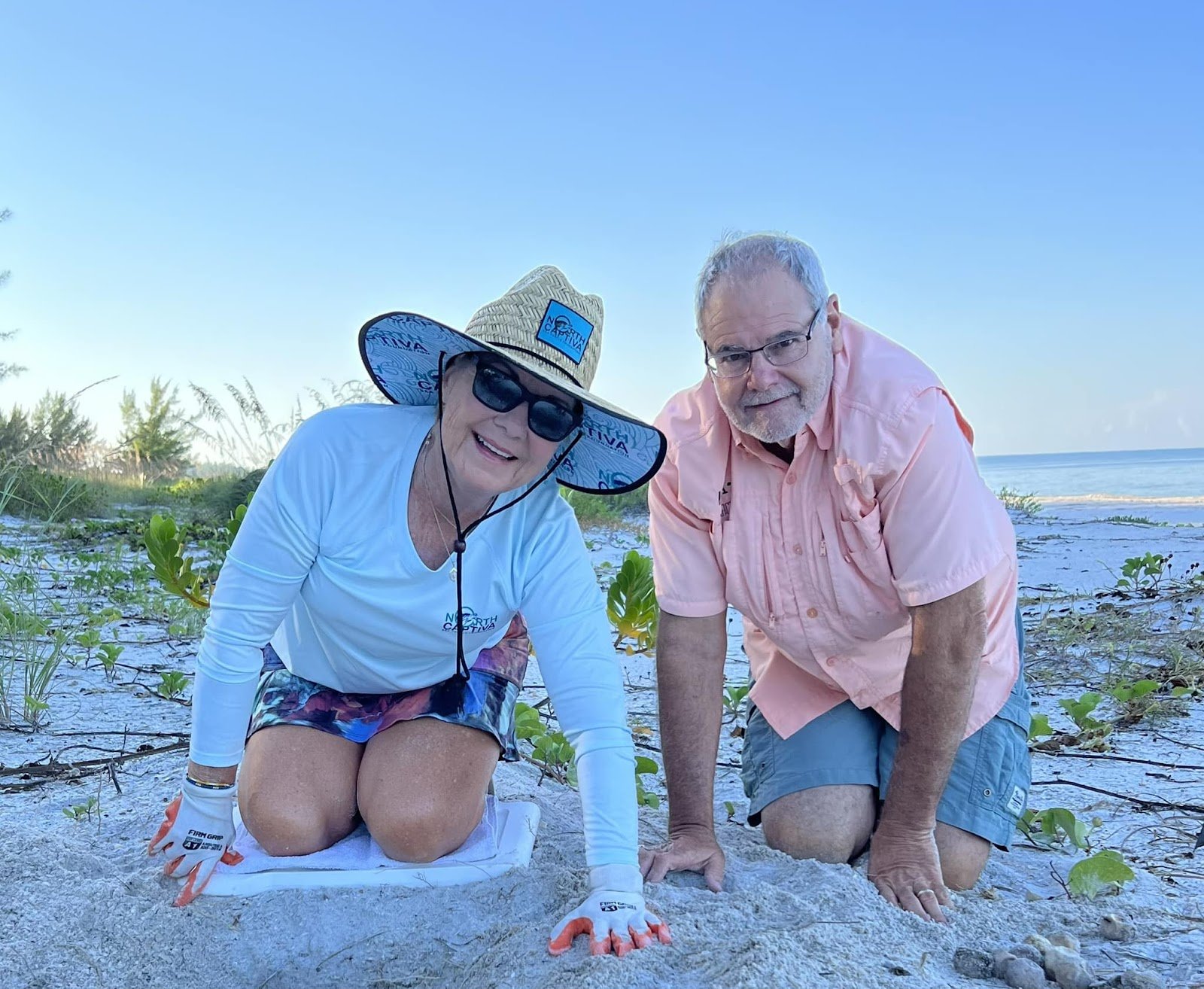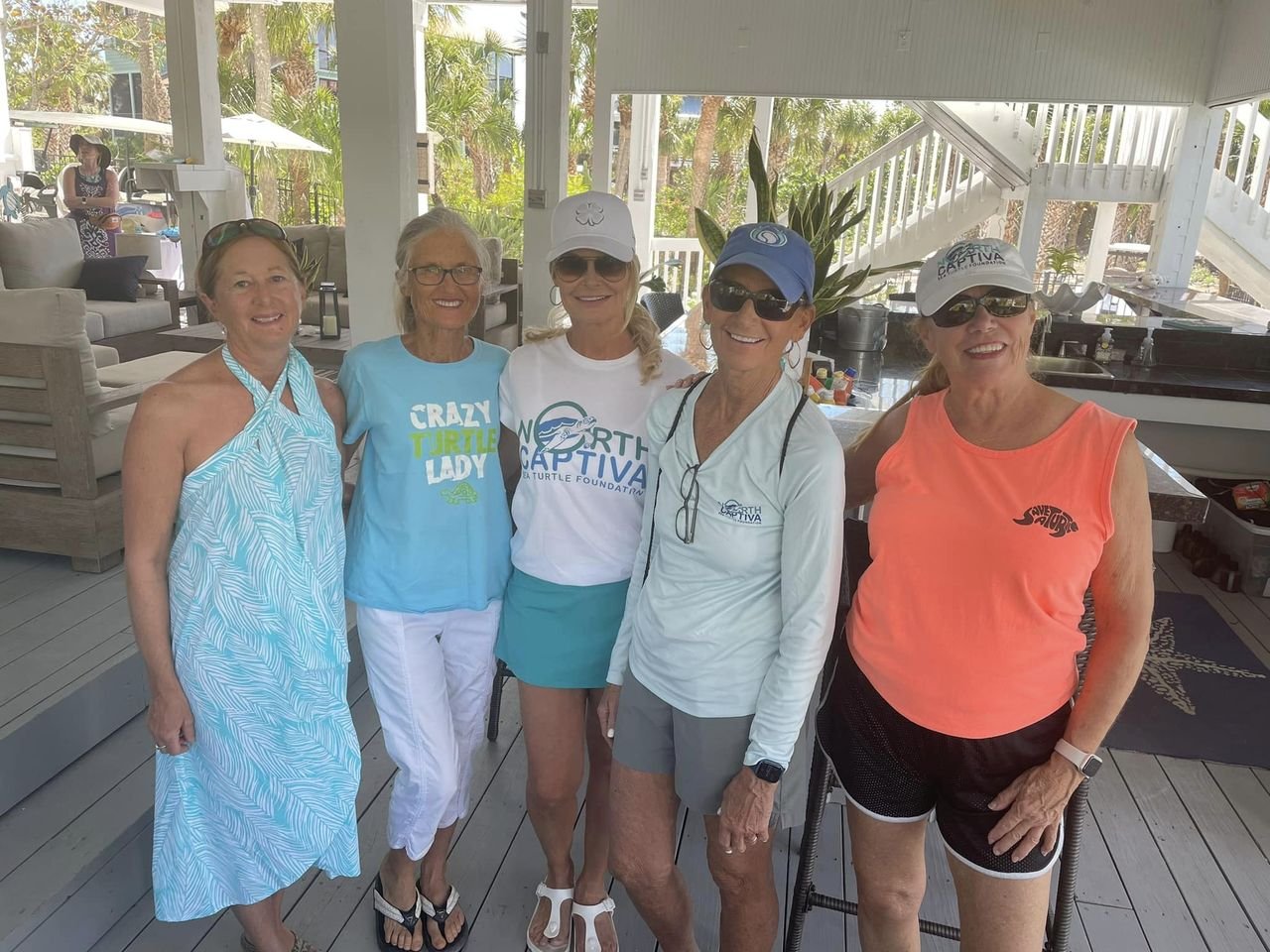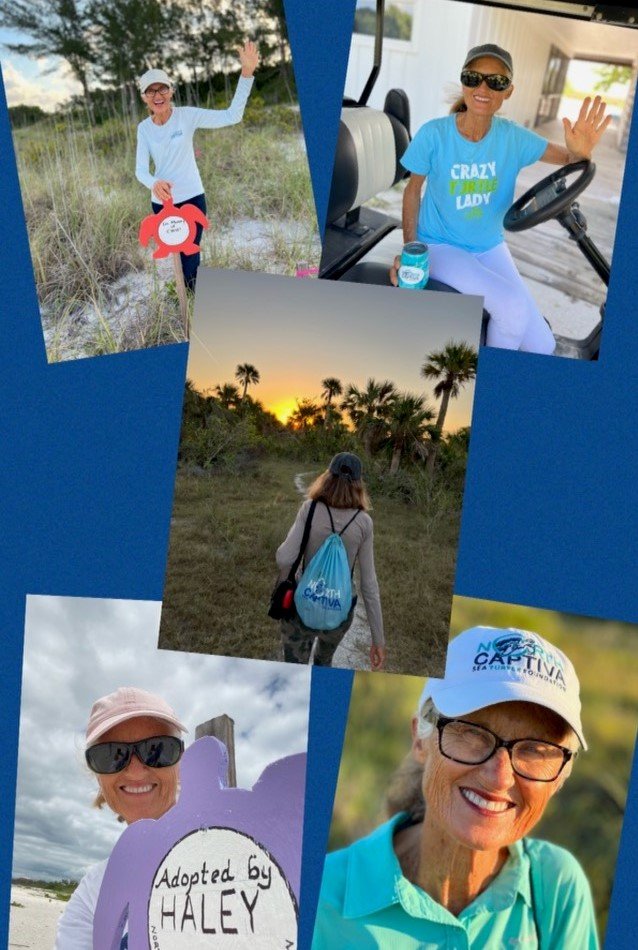Turtle season is finally here on North Captiva Island and it’s a time of excitement for nature lovers and vacation-goers alike. North Captiva is a prime location for observing sea turtles and their nesting habits, making it a must-visit destination for anyone who loves wildlife and the great outdoors. Sea turtles are a crucial part of our ecosystem and play a vital role in maintaining the balance of marine life. With the arrival of turtle season: April 15-October, visitors to North Captiva have the opportunity to witness these magnificent creatures’ nests. Whether you’re a seasoned beachcomber or a first-time visitor, this is the perfect time to experience the natural beauty of North Captiva and stay at one of Tortuga Paradise’s cozy and comfortable vacation rentals. So pack your bags and head on down to North Captiva Island to see the wonders of turtle season for yourself!
Sea Turtle Mating Season
Male sea turtles migrate to the waters near the beach in search of females, a few weeks before the nesting season begins. The mating process involves the male sea turtle clinging to the female by wrapping its front flipper claws around her carapace.
This typically takes place at the surface where it’s easier for both of them to breathe and conserve energy. Finding a mate is crucial for sea turtles if they want to ensure their genes are passed on to the next generation. If there are few females within the mating grounds, male sea turtles will use their curved claws to hang on to her, guarding against other potential mates. However, if there are plenty of females, male sea turtles will spend their time “speed dating”, making sure they invest their time, energy, and genes wisely. Different species of sea turtles have different mating seasons, with Leatherback sea turtles currently in their breeding season.
Loggerhead sea turtles can be found breeding in April-May at the western edge of the Florida current, while Green sea turtles breed off southeastern Florida beaches typically in May-June. Each species has its own unique mating process and rituals, making the turtle season on North Captiva a truly special time to witness. Leatherback Sea Turtles are a unique and fascinating species of sea turtles. They are known for their large size, with adults reaching up to 7 feet in length and weighing over 2,000 pounds. They are also known for their distinctive leathery shells, which are not as hard as those of other sea turtle species. Leatherback sea turtles are currently in their breeding season. However, much of their mating process remains a mystery. Scientists have been unable to study this elusive species in the wild, making it difficult to learn more about their behavior and habits. Despite their size and significance, very little is known about the mating process of leatherback sea turtles. Scientists are still trying to learn more about this species and its behavior in the wild.
Loggerhead Sea Turtles are a common species of sea turtle found along the coast of North Captiva. They are known for their large, hard shells and their ability to live in a variety of habitats, from bays and estuaries to deep ocean waters.
Logger Head Sea Turtles
Discover the Enchanting Dance of Sea Turtles: Loggerheads & Greens Find Love in Florida’s Currents

Loggerhead sea turtles breed from April to May at the western edge of the Florida Current. During this time, male sea turtles will migrate to waters near the beach in search of females to mate with. The western edge of the Florida Current is the primary location for loggerhead sea turtle breeding. This area provides the ideal conditions for the turtles to mate and nest.
Green Sea Turtles are another species of sea turtle found along the coast of North Captiva. They are known for their distinctive green-colored shells and their herbivorous diets. Green sea turtles typically breed off southeastern Florida beaches in May and June. During this time, males will swim in search of females to mate with. Southeastern Florida beaches are the primary location for green sea turtle breeding. These beaches provide the ideal conditions for the turtles to mate and nest and are an important part of the species’ life cycle.
North Captiva Sea Turtle Foundation is a non-profit organization dedicated to the preservation and protection of sea turtles on North Captiva Island. The history of this Foundation started on August 13, 2004. Hurricane Charlie, a Category Four storm came on shore and had a major impact on the Island. Trees and vegetation were totally destroyed as well as major damage to homes and other buildings on the island. The beaches in the early State Park were toppled by Australian pines making it impossible to walk along the shoreline which caused difficulty for visitors to arrive.
Island Heroics: The Inspiring Tale of North Captiva’s Sea Turtle Saviors
Sue-Ann Murphy, an island resident at the time, complained to the State of Florida about the issue and asked if the State would clear the park beach immediately. Soon after making her plea, officials from the State warned her that due to Turtle Season being in full effect, they would only be able to do a small clearing on the Island if someone agreed to monitor the beach for turtle crawls and nests every day while the clean up was taking place.
Originally there were 8 people who were willing to monitor the beach. During their initial checks, they met with the biologist at SCCF (Sanibel Captiva Conservation Foundation) in Sanibel for training. Over time, monitor support for the project began to dwindle. It was not until 2006 that the official program with the North Captiva Sea Turtle Foundation Inc. began. Officially designated as a 501(c)(3), this nonprofit organization based out of Fort Myers, Florida seeks to enhance marine life and support sea turtle conservation efforts across North Captiva Island.
Ultimately, Sue Ann was a one-woman team until Pamela West joined her in 2011. Mark and Helen Justice joined in 2012 and are currently the leaders of the program today. Since then Ann and her dream have expanded to include Angie B, Brenna Fox, Nancy McBride, Genny Preston, Miranda Muller, Alice Williams, Helen & Mark Justice, Pamela West, Terry & Mary Ann Preach, and anyone else we forgot.

Thank you all for volunteering for this amazing cause. The North Captiva Sea Foundation has gone on to collaborate and gain the support of several other organizations including the Broward County Sea Turtle Conservation Program, The Turtle Hospital, the Sea Turtle Conservancy, Ecological Associates, Inwater Research Group, Local homeowners, and more. The foundation’s mission is to educate the public on the importance of sea turtles and the role they play in the island’s ecosystem. The foundation plays a crucial role in ensuring the survival of sea turtles on North Captiva Island. The organization conducts research and monitoring of sea turtle nesting sites, as well as provides support for conservation and management efforts. They will stake the nests and monitor them for 45-60 days to see how many eggs hatch from each nest. If they find a nest hatched they will then count the eggs and make sure there are no stragglers left behind. If the nest doesn’t hatch in that time frame they dig up the nest to see what could possibly have happened to the nest and report all these findings. They will also report any nests that prey have gotten into and count the eggs affected.
The foundation also works to educate the public on the importance of sea turtles and how to protect them. The North Captiva Sea Turtle Foundation has a Facebook page that provides updates on sea turtle nesting and hatching activity on the island. You can also Adopt-A-Nest and support the foundation on the Facebook page. You will receive information on your nest at the end of the season. The page also offers educational resources and information on how to get involved with the foundation. Followers of the page can stay up-to-date on the latest news and events related to sea turtle conservation on North Captiva Island.
Turtle season on North Captiva Island is a time not to be missed. Whether you’re a nature lover, a student of marine biology, or just someone looking for a unique vacation experience, North Captiva Island and Tortuga Paradise’s rentals are the perfect destinations. So pack your bags and head to North Captiva Island to witness the majesty of turtle season for yourself!




